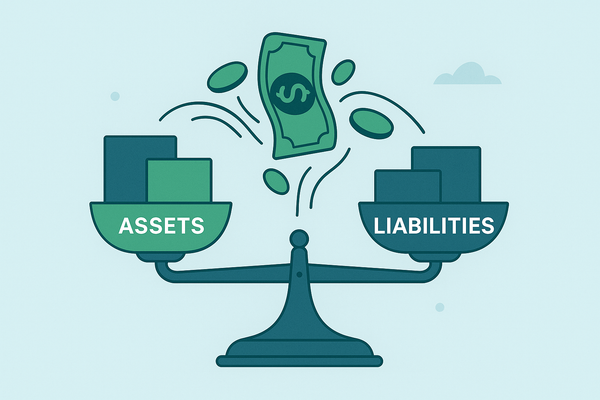How to Manage Accounts Payable Effectively (and Keep Your Cash Flow Healthy)

Introduction
Managing cash flow isn’t just about collecting money from customers—it’s also about how and when you pay your bills. Accounts payable (AP) is often overlooked, but it plays a huge role in keeping your business financially healthy.
Done right, AP management helps you avoid late fees, maintain strong vendor relationships, and free up cash for growth. Done poorly, it can drain your working capital and even damage your reputation.
In this post, we’ll cover the essentials of accounts payable management, the most common mistakes to avoid, and simple best practices you can start applying today.
What Is Accounts Payable?
Accounts payable (AP) represents the money your business owes to suppliers, vendors, or service providers for goods and services you’ve already received but haven’t paid for yet.
Think of it as the flip side of accounts receivable: while receivables track incoming cash, payables track your outgoing obligations.
AP usually appears as a short-term liability on your balance sheet and directly impacts your day-to-day cash flow.
Why Is Accounts Payable Management Important?
Good AP management does more than prevent overdue bills. It:
- Protects cash flow – Knowing when payments are due helps you plan your cash outflows.
- Strengthens vendor relationships – Paying on time (or negotiating terms) builds trust.
- Prevents penalties – Avoiding late fees keeps costs down.
- Improves forecasting – Accurate AP data helps you predict future cash needs.
- Positions you for growth – Vendors may extend better credit terms if they see you as reliable.
In short: AP isn’t just bookkeeping—it’s a tool for smarter business decisions.
Common Accounts Payable Challenges
Many small businesses run into the same pitfalls when it comes to AP. Here are the big ones to watch for:
- Paying too early – Hurts cash flow by reducing available working capital.
- Paying too late – Leads to late fees and strained vendor relationships.
- Poor tracking systems – Lost invoices, duplicate payments, or missed due dates.
- Lack of approval controls – Unauthorized or fraudulent payments slipping through.
- Not reviewing terms – Missing out on discounts or favorable conditions.
Best Practices for Managing Accounts Payable
Here are practical steps you can use to take control of AP in your business:
- Centralize Your Invoices
Keep all invoices in one system (accounting software, cloud folder, or AP automation tool). This reduces the risk of missed payments. - Set Up Clear Approval Workflows
Decide who approves payments and at what thresholds. This avoids unauthorized spending and mistakes. - Take Advantage of Payment Terms
Don’t rush to pay early unless there’s a discount. Use the full payment window to keep cash on hand longer. - Negotiate with Vendors
Ask for extended terms (e.g., Net 45 instead of Net 30) or early payment discounts if you have the cash. Strong vendor relationships can unlock better deals. - Automate Where Possible
Tools like QuickBooks Online, Xero, or Bill.com can track due dates, flag duplicates, and schedule payments automatically. - Maintain a Cash Flow Forecast
Tie AP into your cash flow forecasting so you always know what’s coming due against your expected inflows. - Review AP Aging Reports Regularly
This report shows unpaid bills by due date. It’s your early-warning system for overdue payments.
Quick Accounts Payable Health Check
Ask yourself these questions:
- Do I know exactly how much I owe vendors right now?
- Am I taking full advantage of payment terms?
- Have I avoided late fees in the past 3 months?
- Do I have a system for preventing duplicate or fraudulent payments?
- Are my vendor relationships strong and supportive?
If you answered “no” to any of these, there’s room to improve your AP process.
Conclusion
Accounts payable might not feel as exciting as growing sales, but it’s a critical piece of your cash flow puzzle. By organizing invoices, using payment terms wisely, and building strong vendor relationships, you’ll not only avoid headaches—you’ll also free up cash to reinvest in your business.
Want to make managing AP even easier? Download our 12-Month Cash Flow Forecasting Template to see how upcoming payables fit into your overall cash picture.




